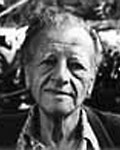Alfred Preis facts for kids
Quick facts for kids
Alfred Preis
|
|
|---|---|

Alfred Preis
|
|
| Born | February 2, 1911 Vienna, Austria-Hungary
|
| Died | March 29, 1994 (aged 83) Honolulu, Hawaii
|
| Nationality | Austrian |
| Alma mater | Vienna Technical University |
| Occupation | Architect |
| Awards | National AIA award for Arizona Memorial and the First Methodist Church, AIA Chapter Awards for the Gustav Ecke Residence, James Harrison Residence, ILWU Addition Special Citation for Contribution to the Environment |
| Practice | Redlich und Berger in Austria, then Dahl and Conrad, Hart Wood, Associated Architects, and his own office in Honolulu |
| Buildings | USS Arizona Memorial, the entrance of the Honolulu Zoo, the First United Methodist Church, ILWU headquarters (all in Honolulu) |
Alfred Preis (born February 2, 1911 – died March 29, 1994) was an architect from Austria. He is most famous for designing the USS Arizona Memorial at Pearl Harbor in Hawaii.
Contents
Who Was Alfred Preis?
Alfred Preis was born in Vienna, Austria, in 1911. He became a very important architect. He is best known for creating the design of the USS Arizona Memorial. This special place honors the brave people who lost their lives during the attack on Pearl Harbor in 1941.
Early Life and Studies
Alfred Preis grew up in Vienna, Austria. He studied architecture at the Vienna University of Technology. He earned his architecture degree in 1938. After finishing school, he worked as a site manager. He also designed interiors, furniture, and store fronts.
In 1939, Alfred and his wife had to leave Austria. This was because Germany had taken over their homeland. They moved to the United States with help from a Catholic refugee group.
Life in Honolulu
Alfred Preis eventually moved to Honolulu, Hawaii. His life there had some challenges at first.
A Difficult Time
After the attack on Pearl Harbor on December 7, 1941, many people of Japanese and German heritage in the U.S. were held in special camps. Alfred Preis, being of German heritage, was held for three months at the Sand Island Detainment Camp in Hawaii. This was part of a government policy during World War II.
His Architecture Career
After he was released, Preis worked for the Hawaii Territorial Department of Public Works. Later, he opened his own architecture office.
He designed several important buildings in Honolulu. One of them is the entrance to the Honolulu Zoo. But his most famous work is the USS Arizona Memorial.
Designing the USS Arizona Memorial
Alfred Preis's design for the memorial was chosen from many others. The Navy had specific rules for the design:
- It needed to look like a bridge.
- It had to hold 200 visitors.
- It could not touch the sunken USS Arizona battleship itself.
His original plan included small windows where visitors could see the ship underwater. However, the Navy decided not to include these.
The memorial was officially opened on May 30, 1962, by President John F. Kennedy. At first, some people didn't like the design. They called it a "squashed milk carton" because its roof looked like it sagged in the middle.
Alfred Preis explained his design:
The structure sags in the center but stands strong at the ends. This shows initial defeat and ultimate victory. The overall feeling is calm. Sadness was left out so each person can think about their own feelings.
Today, the USS Arizona Memorial is a very popular place. About 1.5 million people visit it every year.
Later Years and Arts Promotion
After his work as an architect, Alfred Preis became a big supporter of arts and culture in Hawaii. From 1966 to 1980, he was the first leader of the Hawaii State Foundation for Culture and the Arts.
During this time, he helped make Hawaii the first state to have a special rule. In 1967, Hawaii decided that one percent of the money for public building projects must be used for public art. This means that new schools or government buildings would also have art.
Preis also helped start the "Artists in the Schools" program. This program allowed students in Hawaii schools to work with local professional artists. It gave kids a chance to learn about art directly from artists.
Alfred Preis passed away in 1994. His ashes were scattered from the USS Arizona Memorial. Today, there is an award called the Alfred Preis Honor. It is given to people who have shown a lifelong dedication to arts and arts education in Hawaii.


